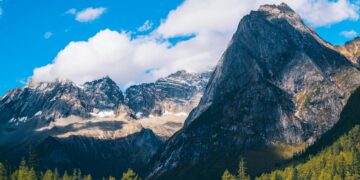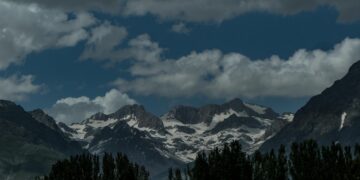1. Introduction
Tucked away in the Upper Dir district of Khyber Pakhtunkhwa, Kumrat Valley is one of Pakistan’s most breathtaking and lesser-known travel destinations. With its dense forests, alpine meadows, flowing rivers, and towering mountains, Kumrat offers a truly magical escape into nature. Unlike other tourist-heavy spots like Murree or Naran, Kumrat remains relatively untouched, making it an ideal destination for those seeking tranquility, adventure, and raw natural beauty.
Though it’s still emerging as a mainstream tourist site, those who visit Kumrat often refer to it as “Heaven on Earth”—a land where serenity, wilderness, and cultural richness converge.
This is where the importance of the best tour services in Pakistan comes into play—companies that not only provide transport and accommodation but also ensure a meaningful connection with the places you visit.
2. Geography and Accessibility
Kumrat Valley lies in the Hindu Kush mountain range and is accessible through the town of Thal in Upper Dir. It stretches along the Panjkora River, with thick forests of deodar trees flanking both sides. The valley sits at an elevation of approximately 7,000 feet, offering a cool and refreshing climate even during the peak summer months.
Getting to Kumrat involves traveling through:
* Islamabad → Dir (approx. 7–8 hours by road)
* Dir → Thal → Kumrat (3–4 hours by 4×4 vehicle)
The journey may be challenging, but the reward is unparalleled scenic beauty.
3. Natural Beauty and Landscapes
Kumrat’s charm lies in its unspoiled wilderness. Every turn reveals new wonders—misty pine forests, turquoise streams, snow-covered peaks, and crystal-clear springs.
Key Natural Attractions:
* Jahaz Banda Meadows – A scenic plateau surrounded by mountains and dotted with wildflowers.
* Katora Lake – A glacial lake nestled in the highlands, accessible via a trek from Jahaz Banda.
* Panjkora River – The lifeline of the valley, perfect for fishing, picnics, and photography.
* Do Kala Chashma (Two-Color Stream) – Where two water streams of different colors merge.
* Kala Chashma (Black Spring) – A natural cold water spring that flows all year round.
These features make Kumrat ideal for hikers, nature photographers, and camping enthusiasts.
4. Climate and Best Time to Visit
Kumrat Valley enjoys a mild summer and snowy winter. The best time to visit is from May to September, when the valley is lush and the weather is ideal for outdoor activities.
Winter in Kumrat transforms the valley into a snow-covered dreamland, but road access becomes difficult due to heavy snowfall. For winter adventure seekers, however, it offers opportunities for snow hiking and frozen lake views.
5. Cultural Heritage and Local Life
Kumrat is inhabited primarily by Kohistani and Pashtun communities, who are known for their hospitality, simplicity, and respect for nature. Visitors can experience:
* Traditional wooden houses
* Pashtun music and folk dances
* Local foods like chapli kebab, mutton karahi, and fresh bread
The people are deeply connected to their environment, and many are involved in agriculture, livestock, or running small guesthouses for tourists.
6. Ecotourism and Responsible Travel
Kumrat is a haven for eco-tourists. With its fragile ecosystem and remote location, preserving the valley’s purity is vital. Tourists are encouraged to:
* Avoid littering and use reusable containers
* Respect wildlife and avoid damaging vegetation
* Stay in eco-friendly lodges or tents
* Avoid playing loud music or disturbing locals
Local guides often promote low-impact tourism, offering insights into sustainable living in the valley.
NOTE : Kumrat Valley is not just a destination; it’s an experience—one that awakens your senses and nourishes your soul.
7. Activities and Adventures in Kumrat
Kumrat is an adventure lover’s paradise. Some of the most popular activities include:
7.1. Trekking and Hiking
* Trek to Jahaz Banda and Katora Lake is the most famous route, taking about 4–6 hours.
* Trails through the deodar forests are suitable for beginners and families.
7.2. Camping
The valley has numerous spots along the Panjkora River where tourists can set up tents. Campfires under the starlit sky, with the sound of rushing water, make for an unforgettable experience.
7.3. Fishing and River Rafting
Fishing for trout and small river fish is a popular pastime. In some seasons, parts of the Panjkora River are suitable for basic rafting or boating.
7.4. Wildlife Watching
The valley is home to:
* Snow leopards (rare sightings)
* Brown bears
* Foxes and ibex
* Rare bird species like the Himalayan monal
8. Infrastructure and Accommodation
While the natural beauty of Kumrat is unmatched, its infrastructure is still developing. Mobile networks work only in patches, and electricity may be limited in remote areas.
Accommodation Options:
* Basic guesthouses in Thal and Kumrat
* Camping sites with facilities
* Traditional homestays with local families
It’s advisable to carry essentials like:
* Power banks
* Flashlights
* Extra food and water
* Sleeping bags (for trekkers)
9. How Kumrat Is Different
Compared to other tourist spots in Pakistan, Kumrat offers an unfiltered connection to nature. It lacks the commercialization of Murree or Swat, which makes it ideal for those looking to disconnect from city life.
Unlike other valleys, Kumrat’s untouched forests and minimal infrastructure are part of its appeal. It’s a place where you can wake up to birdsong, drink from a mountain spring, and sleep under a sky full of stars.
10. Challenges and Preservation
Kumrat is facing some challenges, especially with the rise of tourism:
* Deforestation due to illegal logging
* Littering and pollution by irresponsible visitors
* Encroachment of concrete structures
Local communities and conservation groups are now working to introduce eco-friendly regulations. The government is also planning new access roads, waste management systems, and tourism controls to protect the valley’s delicate ecosystem.
11. Safety Tips and Travel Advice
* 4×4 vehicles are recommended for off-road terrain.
* Always travel with a local guide, especially if trekking to remote areas.
* Carry first aid supplies, insect repellent, and warm clothes.
* Respect local customs and dress modestly.
* There are no ATMs in Kumrat—carry enough cash.
12. Conclusion: The Untouched Jewel of Pakistan
Kumrat Valley is not just a destination; it’s an experience—one that awakens your senses and nourishes your soul. It is a place of peaceful forests, echoing rivers, smiling locals, and thrilling adventures. Whether you’re an explorer, a photographer, a couple looking for solitude, or a family craving nature, Kumrat delivers beyond expectations.
In a country already rich in natural wonders, Kumrat stands out as a hidden jewel—a paradise waiting to be discovered by those willing to venture off the beaten path. As more people begin to uncover its secrets, let us ensure we preserve its magic for generations to come.




















